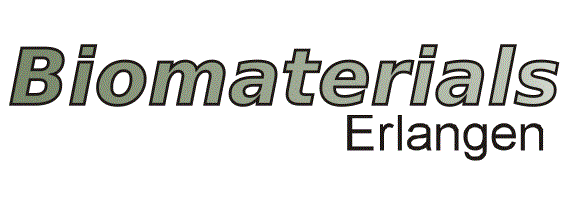Jonas Röder
Jonas Röder, M. Sc.
Doktorand
Alginate-based bioinks with tailorable microstructural properties for controlled cell-behavior
Supervisor: Prof. Dr.-Ing. habil. Dr. h.c. Aldo R. Boccaccini
Alginate-based hydrogels are of special interest in wound healing, drug delivery and tissue engineering applications, due to their biocompatibility and similarity to the extracellular matrix in tissues [1]. However, untreated alginate hydrogels show limited in vivo degradation in an unpredictable manner and thus alginate needs to be functionalized in order to achieve controlled degradation rates [2,3]. The aim of this project in the framework of the DFG funded SFB/Transregio TRR 225 („From the fundamentals of biofabrication towards functional tissue models“) (TP A01) is to further refine the ink system based on oxidized alginate (ADA) and gelatin developed during the first funding period of the project. The focus of this work will be on the post-fabrication optimization of the material to have better control over degradation, cell proliferation and ultimately potential tissue formation. Therefore, the introduction of controlled porosity and anisotropic structures will be investigated. The rheology, mechanical properties, printability, crosslinking behavior and degree, degradation and 3D cell behavior using different cell-types will be monitored to ensure that all these critical parameters are sufficient for biofabrication. This project is being carried out in collaboration with Prof. Ben Fabry, Biophysics Group, and Dr. Rainer Detsch, Institute of Biomaterials, FAU.
[1] Lee, K. Y. et al.; Alginate: properties and biomedical applications; Progress in Polymer Science 37; 106-126; 2012
[2] Jia, J. et al.; Engineering alginate as bioink for bioprinting; Acta Biomaterialia 10; 4323-4331; 2014
[3] Reakasame, S. et al.; Oxidized Alginate-Based Hydrogels for Tissue Engineering Applications: A Review; Biomacromolecules 19; 3-21; 2018.

